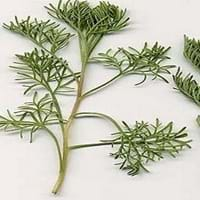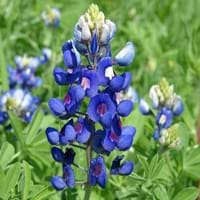Life Span
Perennial
Perennial
Type
Shrub
Flowering Plants
Origin
Southern Europe
Mediterranean, North Africa, Northern America
Types
not available
Anthony Peak Lupine, Silver Bush, Garden Lupine, Spider Lupine, Adonis Lupine
Number of Varieties
Not Available
Habitat
Temperate Regions
Pine barrens, Sandy areas
USDA Hardiness Zone
5-8
3-7
Sunset Zone
2b, 3a, 3b, 4, 5, 6, 7, 8, 9, 10, 11, 12, 13, 14, 15, 16, 17, 18, 19, 20, 21, 22, 23, 24
1a, 1b, 2a, 2b, 3a, 3b, 4, 5, 6, 7, 14, 15, 16, 17
Habit
Upright/Erect
Upright/Erect
Minimum Height
Not Available
Minimum Width
Not Available
Flower Color
Yellow, Gray
Blue, Pink, White
Flower Color Modifier
Not Available
Not Available
Fruit Color
Non Fruiting Plant
Not Available
Leaf Color in Spring
Gray Green
Light Green
Leaf Color in Summer
Gray Green
Green
Leaf Color in Fall
Gray Green
Green
Leaf Color in Winter
Not Available
Not Available
Leaf Shape
Long hair-like leaves
Oblovate
Plant Season
Spring, Summer, Fall
Summer
Sunlight
Full Sun
Full Sun, Part sun
Type of Soil
Loam
Loose, Moist
The pH of Soil
Neutral
Slightly Acidic
Soil Drainage
Well drained
Well drained
Bloom Time
Late Summer
Late Spring, Summer
Tolerances
Not Available
Not Available
Where to Plant?
Ground, Pot
Ground
How to Plant?
Cuttings, Seedlings
Seedlings
Plant Maintenance
Medium
Medium
Watering Requirements
Average Water Needs, Keep the Soil well drained
Form a Soil ring to water efficiently, Keep the ground moist but not water-logged, Requires a lot of watering, Water in morning to avoid prompting diseases
In Summer
Lots of watering
Lots of watering
In Spring
Moderate
Moderate
In Winter
Average Water
Average Water
Soil pH
Neutral
Slightly Acidic
Soil Type
Loam
Loose, Moist
Soil Drainage Capacity
Well drained
Well drained
Sun Exposure
Full Sun
Full Sun, Part sun
Pruning
Cut back old stems to the ground, Remove damaged leaves, Remove dead branches, Remove dead leaves
Prune ocassionally
Fertilizers
All-Purpose Liquid Fertilizer, Complete balanced fertilizer
All-Purpose Liquid Fertilizer
Pests and Diseases
Free of serious pests and diseases
Aphids, Fusarium wilt, Root rot, Thripes
Plant Tolerance
Drought
Drought
Flowers
Insignificant
Yes
Flower Petal Number
Not Available
Single
Foliage Texture
Medium
Medium
Foliage Sheen
Matte
Matte
Attracts
Not Available
Bees
Allergy
Skin irritation
Abdominal pain, Asthma, Nausea, Swelling in the face, Vomiting
Aesthetic Uses
Farmland, small hedge, Wild gardens
Showy Purposes
Beauty Benefits
Not Available
Not Available
Environmental Uses
Air purification
Air purification
Medicinal Uses
Antiseptic, Digestive, Liver problems, Skin Disorders, Tonic
Anthelmintic, Diuretic, Treatment of ulcers
Part of Plant Used
Branch, Fibres, Flower Stalk, Gum, Leaves, Twigs
Flowers, Seeds
Other Uses
Oil is used in mosquito repellents, Used for fragrance, Used to make hair tonic
Showy Purposes, Used as Ornamental plant, Used for fragrance
Used As Indoor Plant
No
No
Used As Outdoor Plant
Yes
Yes
Garden Design
Herb, Vegetable, Mixed Border, Rock Garden, Wall
Bedding Plant, Container, Feature Plant, Foundation, Rock Garden
Botanical Name
ARTEMISIA abrotanum
Lupinus
Common Name
lad's love , southern wormwood , old man , boy's love , appleringie , sitherwood
Hybrid Lupine
In Hindi
southernwood
वृक संयंत्र
In German
Eberraute
lupine
In French
aurone ou citronnelle
usine de lupin
In Spanish
Artemisia abrotanum
planta de lupino
In Greek
Artemisia abrotanum
φυτό λούπινο
In Portuguese
Abrótano
tremoço planta
In Polish
Bylica boże drzewko
łubin roślin
In Latin
Southernwood
Plinio herba
Phylum
Magnoliophyta
Magnoliophyta
Class
Magnoliopsida
Magnoliopsida
Family
Asteraceae
Fabaceae
Clade
Angiosperms, Asterids, Eudicots
Not Available
Tribe
Anthemideae
Not Available
Subfamily
Asteroideae
Faboideae
Number of Species
Not Available
Season and Care of Southernwood and Lupine
Season and care of Southernwood and Lupine is important to know. While considering everything about Southernwood and Lupine Care, growing season is an essential factor. Southernwood season is Spring, Summer and Fall and Lupine season is Spring, Summer and Fall. The type of soil for Southernwood is Loam and for Lupine is Loose, Moist while the PH of soil for Southernwood is Neutral and for Lupine is Slightly Acidic.
Southernwood and Lupine Physical Information
Southernwood and Lupine physical information is very important for comparison. Southernwood height is Not Available and width Not Available whereas Lupine height is 2.95 cm and width 1.50 cm. The color specification of Southernwood and Lupine are as follows:
Southernwood flower color: Yellow and Gray
Southernwood leaf color: Gray Green
Lupine flower color: Blue, Pink and White
- Lupine leaf color: Light Green
Care of Southernwood and Lupine
Care of Southernwood and Lupine include pruning, fertilizers, watering etc. Southernwood pruning is done Cut back old stems to the ground, Remove damaged leaves, Remove dead branches and Remove dead leaves and Lupine pruning is done Prune ocassionally. In summer Southernwood needs Lots of watering and in winter, it needs Average Water. Whereas, in summer Lupine needs Lots of watering and in winter, it needs Average Water.





